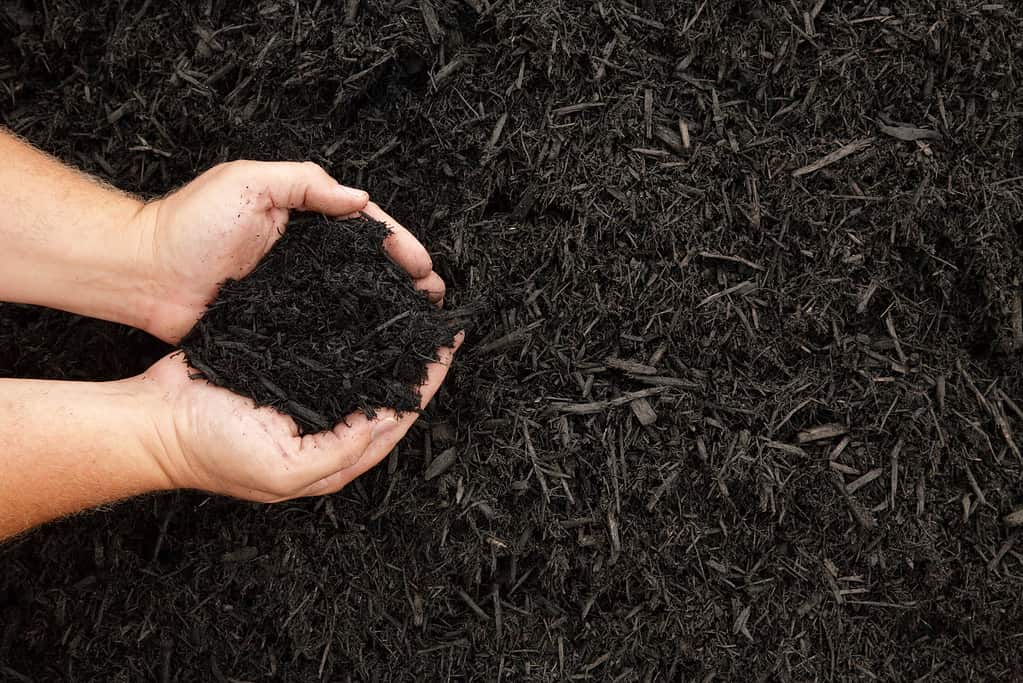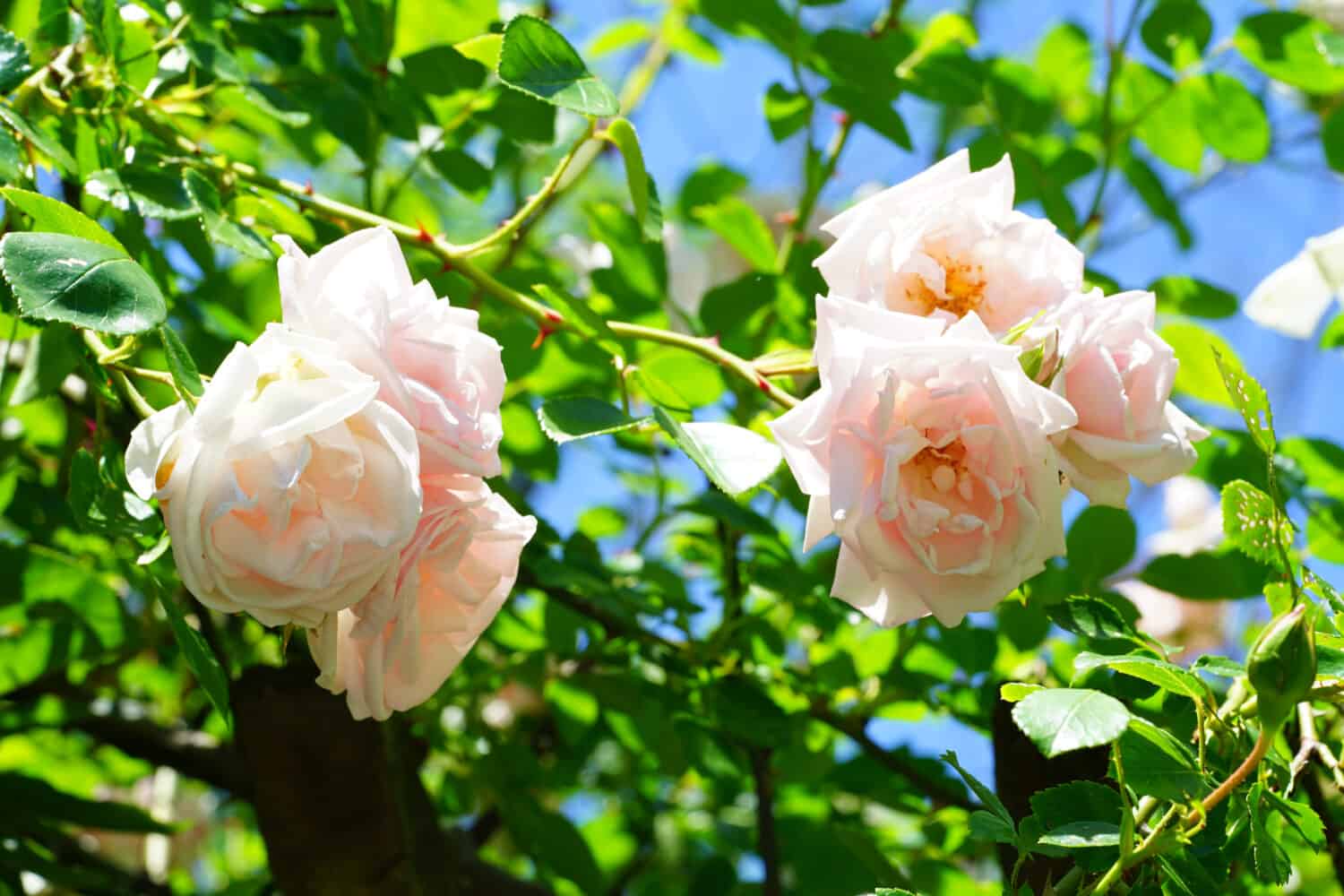Growing roses in Arizona presents some unique challenges. The high temperatures and intense summer sunlight can scorch roses in a hurry. Add to this heat the fact that roses are very thirsty plants and you’ve got a recipe for struggle if you don’t plan accordingly.
In this article, we’ll talk about our top 5 tips for starting your roses out right in the state of Arizona.
5 Tips for Growing Roses in Arizona
Taking into consideration the cultivar, the growing environment, and local weather patterns are all important aspects of growing healthy roses. If you’re new to growing roses in Arizona, the following five tips will help you start strong.
Choose the Right Cultivar
Growing roses in Arizona can be tricky, and which cultivars you choose to work with can make or break a rose garden’s success. Luckily, whether you’re growing your roses indoors or outdoors in your garden, many modern rose cultivars will happily call Arizona their home.
When selecting your roses, you’ll want to go for cultivars that can stand the heat. Earth-Kind cultivars like ‘Knock-Out’, ‘New Dawn’, and ‘Belinda’s Dream’ will eagerly take in the plentiful sunlight. Cultivars ‘Mutabilis’ and ‘The Fairy’ are also particularly good choices for their heat tolerance.
Another important consideration is the cultivar’s tolerance to soil alkalinity. Roses, in general, prefer soils that are slightly acidic as alkaline soils can inhibit a plant’s ability to uptake nutrients. Arizona’s soil tends to be pretty alkaline overall and, in many areas, tends to be fairly salty. Earth-Kind varieties have been tested in and proven to thrive in these conditions, but there are other cultivars to choose from as well. The cultivar Perle d’Or, though it does not like salty soils, readily tolerates not only heat and drought but alkaline soils as well.

The Fairy is a compact Earth-Kind rose cultivar that exhibits excellent heat tolerance. It’s a great candidate for growing in Arizona’s hot, dry summers. When exposed to intense heat, its blooms may turn from gentle pink to a lovely blush white.
©Marina Rose/Shutterstock.com
Start With a Healthy Plant
It’s important to start on the right foot. Unless you’re looking for a real challenge, you should select the healthiest plant you can find when choosing your roses. It helps to be able to see them in person, but online sellers generally check over their plants well.
Bare-root plants are dormant and will not have any foliage. They are usually sold with an outer wax coating that prevents the plant from drying out before it is purchased. When selecting bare-root roses, look for sturdy, green canes. The plant should not be dry and should have some weight to it when you pick it up. Twigs that are brittle or shriveling can signal that a plant, or a part of it, has dried out and may not be a good choice. Bare-root plants are slower to establish than other plants, so take this into account when deciding when to plant. After all, you want a plant that has had time to establish itself and is well-equipped to survive the Arizona summer.
If you’re buying a budded or containerized rose plant, select plants that appear supple and plump. These roses, either own-root or grafted, can be better choices as they will often have root systems that are better developed. These will have a head start establishing before temperatures skyrocket. Check to see that soil in the container is moist and look for signs of any foliar diseases that may be present. Avoid plants that appear wilted or have brittle canes. Roots that are poking out from the bottom of a container can signal that a plant is becoming pot-bound. Pot-bound plants suffer from water and nutrient uptake issues and will have a harder time establishing themselves in your garden.

Bare-root roses usually arrive at markets and garden centers with moist packing around their roots and a wax coating covering the canes.
©Dmitriev Mikhail/Shutterstock.com
Plant in the Right Season
When it comes to planting roses in Arizona, timing matters. When you should plant, however, is different depending on which part of the state you live in. For those who reside in the southern and western parts of the state, the ideal time to plant is between mid-to-late December and January. Residents of northern Arizona should ideally plant between March and April.
Planting early, in late winter or early spring, allows your roses to form robust root systems and establish themselves in their new home. When summer hits and temperatures begin to rise, your plants will need all the ability they can muster to take in moisture and nutrients.
In addition to planting in the right season, you’ll want to time your pruning once your plants have settled in. The ideal time to prune is a couple of weeks before the plant’s buds begin to swell. Deciding when to prune can be tough in Arizona, however, as the date of the last frost can vary pretty widely depending on where you live. Pruning your roses stimulates new, frost-tender growth, so try to time your efforts in conjunction with the weather patterns as best you can.
Placement is Key
Roses need at least 6 hours of direct sunlight per day to stay healthy. However, the time of day during which they receive their light can have a strong impact on their health and water intake.
When choosing where to place your roses, consider areas of your yard that receive some shading during the afternoon hours. Long hours of intense afternoon sunlight can burn your plants’ leaves and quickly dry out the soil. Providing your plants some relief during peak sun hours is usually a good idea, but it’s especially helpful for roses in Arizona. You can use existing trees, shrubs, and hardscaping in your yard to create some cover for your plants during the hottest parts of the day. As long as your roses receive plenty of morning and evening light, they should do just fine.
If you don’t have any option but to plant your roses in direct sun, you should mist them a couple of times per day if possible. This will help keep humidity high between the leaves and keep them cool. Although some may worry that water droplets can magnify sunlight and burn leaves, this isn’t generally the case. Experimentation with optics shows that only leaves hairy enough to hold droplets above the leaf surface are subject to water-related burning. Most likely, though, the droplets will evaporate before they can cause any real harm. That means your roses are safe.
Mulch Deep
The heat of an Arizona summer can quickly dry out soils. Once you have planted your roses, be sure to add three to four inches of protective mulch to the bed. This deep layer of organic matter serves multiple purposes. For one, it will help retain moisture for longer periods. In such an arid state, every drop of water counts. Studies show that proper mulching of plants can reduce average water usage in the garden by 20 percent or more!
In addition to saving water, a garden’s mulch layer helps to moderate the temperature of the underlying soil. That is to say that soils will be cooler in the summer and warmer in the winter. By shielding your soil from the sun and weather, you’re also protecting soil microbes that will eventually turn your mulch into plant food. Robust microbial networks are key to maintaining good soil structure and nutrient exchange throughout it.

A few inches of mulch can help moderate soil temperatures and reduce the frequency with which you’ll need to
water your roses
.
©iStock.com/witmerphotography
Thank you for reading! Have some feedback for us? Contact the AZ Animals editorial team.








